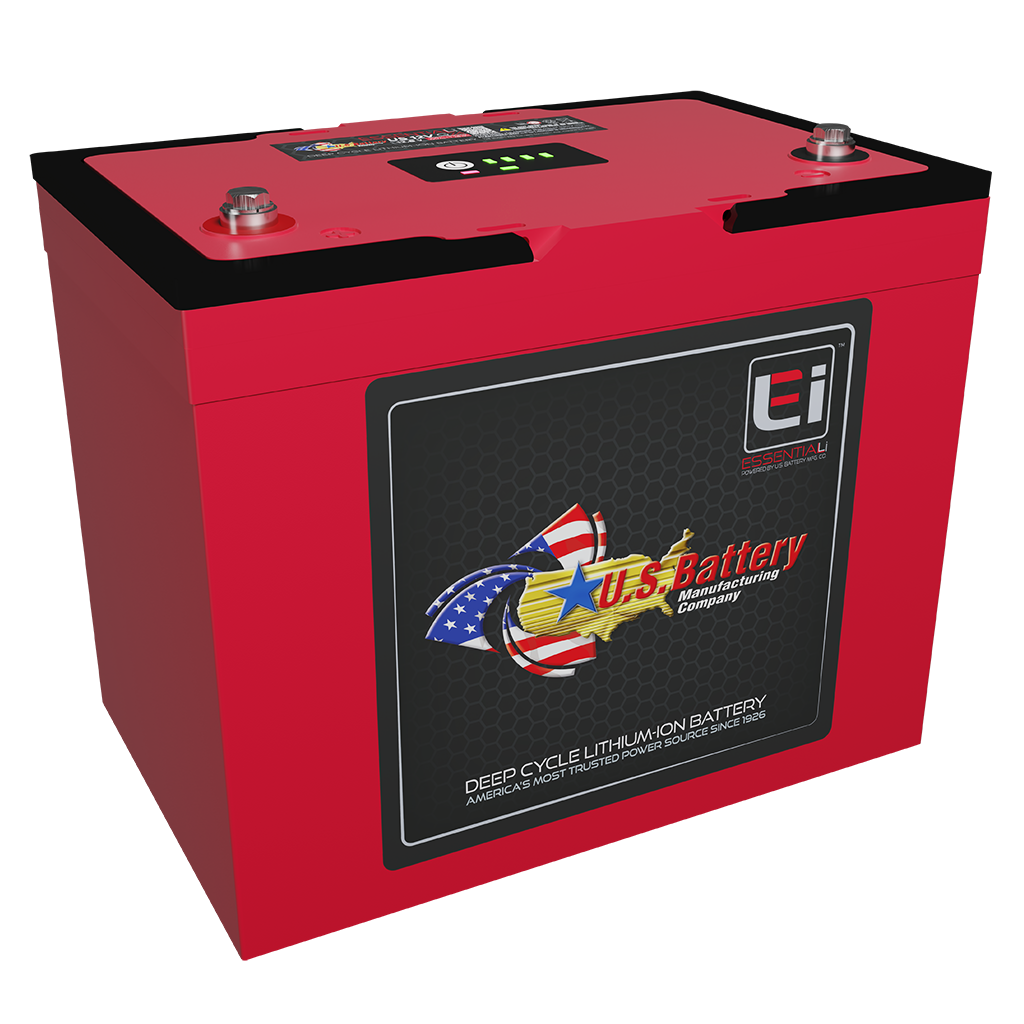Contents
COMPARING U.S. BATTERY’S ESSENTIAL Li® US 12VG24 & COMPETITOR’S PRODUCTS
COMPARING U.S. BATTERY’S ESSENTIAL Li® US 12VG24 & COMPETITOR’S PRODUCTS
12V, 100Ah Lithium-Ion Battery Teardown Comparison
U.S. Battery’s Engineering recently conducted an in-depth tear-down comparison of our all-new Essential Li® 12V 100Ah lithium-ion battery with two of the top competitors in the RV and Marine market space. This comprehensive analysis highlights the many advantages of choosing U.S. Battery lithium-ion batteries for paramount safety, unrivaled performance, and unwavering reliability.
Moreover, apart from these technical attributes, our Group 24 battery boasts the same capacity as its counterparts but in a smaller, more compact design. Notably, it also features unique characteristics such as mobile app integration enabling seamless user control, and convenient LED indicators providing a real-time snapshot of the battery’s status.
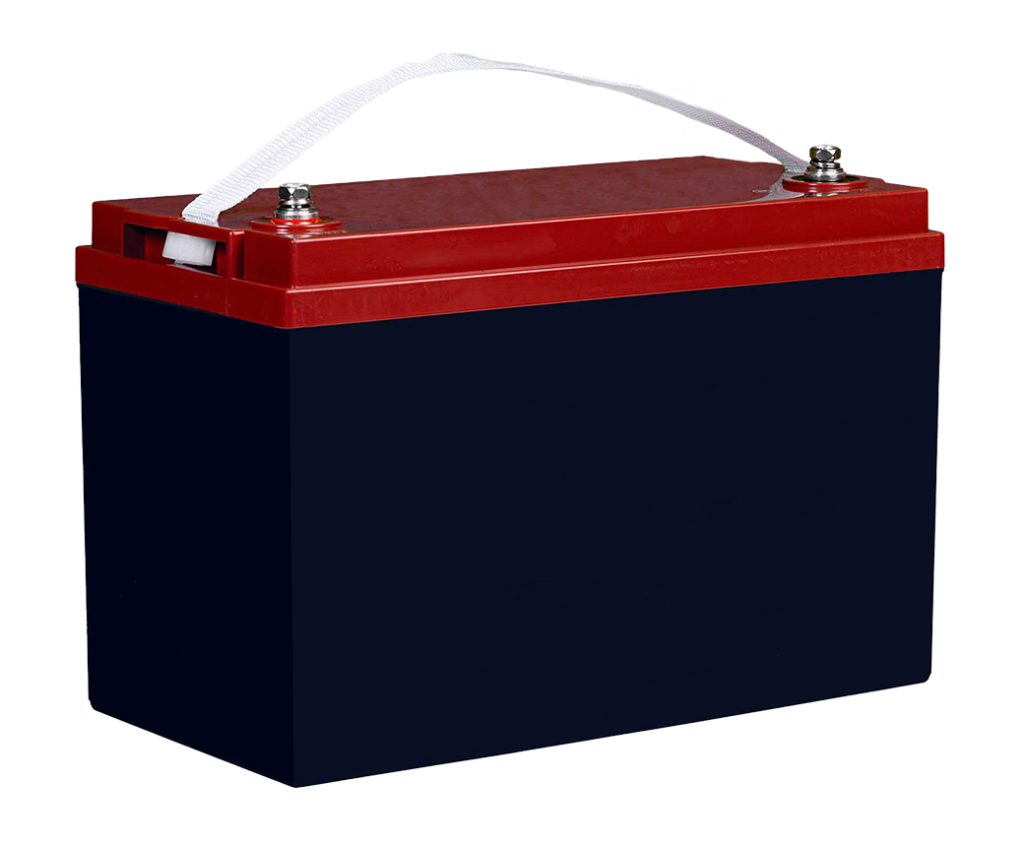
Competitor A
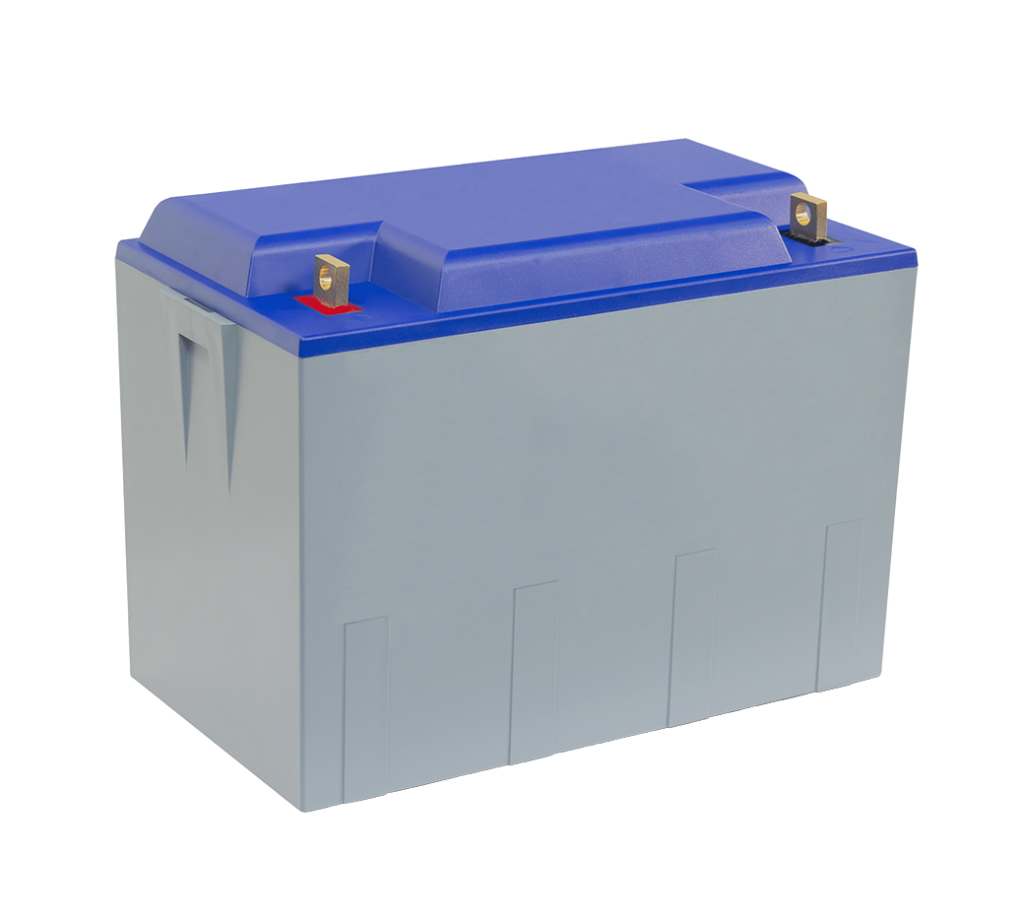
Competitor B
U.S. Battery vs Competitors- Construction Summary
US 12VG24 | Competitor A | Competitor B | |
Battery Model | 12V 100Ah Group 24 | 12V 100Ah Group 27 | 12V 100Ah Group 27 |
Shell Construction | Fastened with Gasket (Repairable) | Glued (Not Repairable) | Glued (Not Repairable) |
Environmental Protection | IP65 | N/A | N/A |
Cell Type | Prismatic LFP cells | Cylindrical LFP cells | Cylindrical LFP cells |
Cell
Configuration | 4S x 1P = 4 Cells | 4S x 28P = 112 Cells | 4S x 30P = 120 Cells |
On/Off Button & LEDs | Button and 6 LED Indicators | None | None |
Mobile App Enabled | Yes (U.S. Battery Mobile App) | No | No |
BMS Board/Software | Customized Board and Software with Wireless Communication | Purchased Board. Not Customized or Controlled. | Purchased Board. Not Customized or Controlled. |
Handle | Built-In Plastic Handle | Fabric Handle | None |
Parallel Cell Welding | No Cells in Parallel | Spot Welded | Spot Welded |
Series Cell Welding | Laser Welded | Spot Welded | Bolted at
Single Point,
Not Welded |
Bus Bar Thickness | 0.080″ (16-20X competition) | 0.005″ | 0.004″ |
Thermocouple | 3 Thermocouples | 1 Thermocouple | 1 Thermocouple |
US 12VG24 | Competitor A | Competitor B | |
Battery Model | 12V 100Ah
Group 24 | 12V 100Ah Group 27 | 12V 100Ah
Group 27 |
Shell
Construction | Fastened with Gasket (Repairable) | Glued (Not Repairable) | Glued (Not Repairable) |
Environmental Protection | IP65 | N/A | N/A |
Cell Type | Prismatic LFP cells | Cylindrical LFP cells | Cylindrical
LFP cells |
Cell Configuration | 4S x 1P = 4 Cells | 4S x 28P = 112 Cells | 4S x 30P = 120 Cells |
On/Off Button
& LEDs | Button and 6 LED Indicators | None | None |
Mobile App Enabled | Yes (U.S. Battery Mobile App) | No | No |
BMS Board/Software | Customized Board and Software with Wireless Communication | Purchased Board. Not Customized or Controlled. | Purchased Board. Not Customized or Controlled. |
Handle | Built-In Plastic Handle | Fabric Handle | None |
Parallel Cell Welding | No Cells in Parallel | Spot Welded | Spot Welded |
Series Cell Welding | Laser Welded | Spot Welded | Bolted at Single Point, Not Welded |
Bus Bar Thickness | 0.080″ (16-20X competition) | 0.005″ | 0.004″ |
Thermocouple | 3
Thermocouples | 1
Thermocouple | 1
Thermocouple |
Cell Design
Both competitor batteries use cylindrical lithium iron phosphate (LFP) cells. While cylindrical cells offer advantages in cost and production capability, large numbers of cells are needed in parallel to reach the required capacity of the battery pack. This is because cylindrical cells are small-capacity cells (~3.2 Ah), originally designed for consumer electronics such as power tools. Cell balancing, which is the management of individual cell state of charge (SOC) by the battery management system (BMS), is crucial to life, performance, and safety. The large number of cells in the competitor batteries creates many points of failure and poses challenges to keeping cells balanced. The competition is trying to manage groups of cells in parallel, while U.S. Battery’s BMS is balancing single cells at a time.
For example, both competitors have 28-30 cells in parallel in each “stack.” In total, the competitor batteries have 112 – 120 cells. U.S. Battery has no cells in parallel; instead, four large format 100 Ah prismatic cells in series. This is advantageous due to the ability of the BMS to monitor and control single cells.
Competitor A & B:
~112-120 cylindrical cells spot welded in parallel/series.
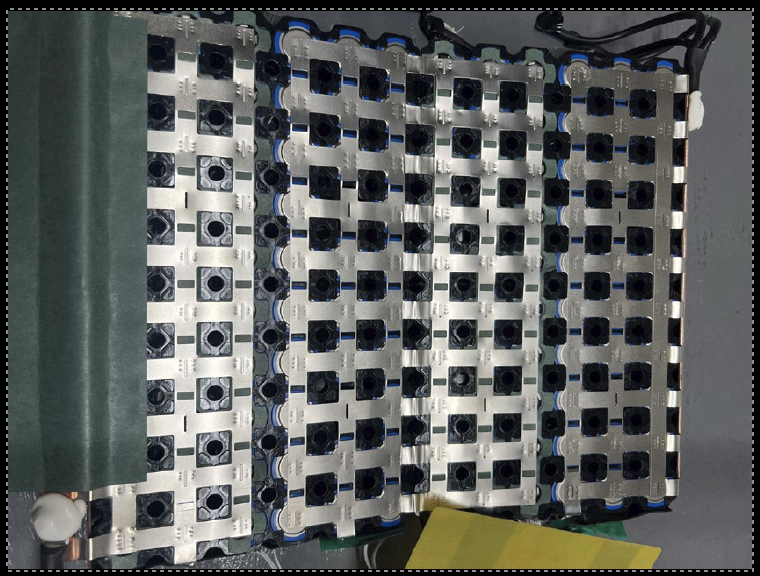
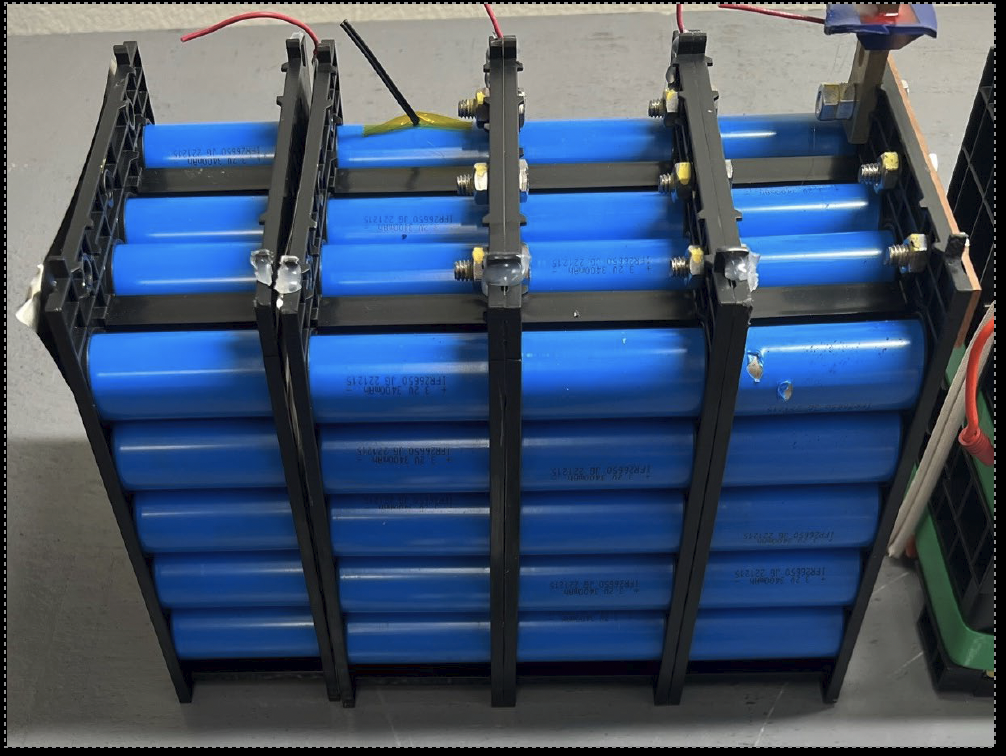
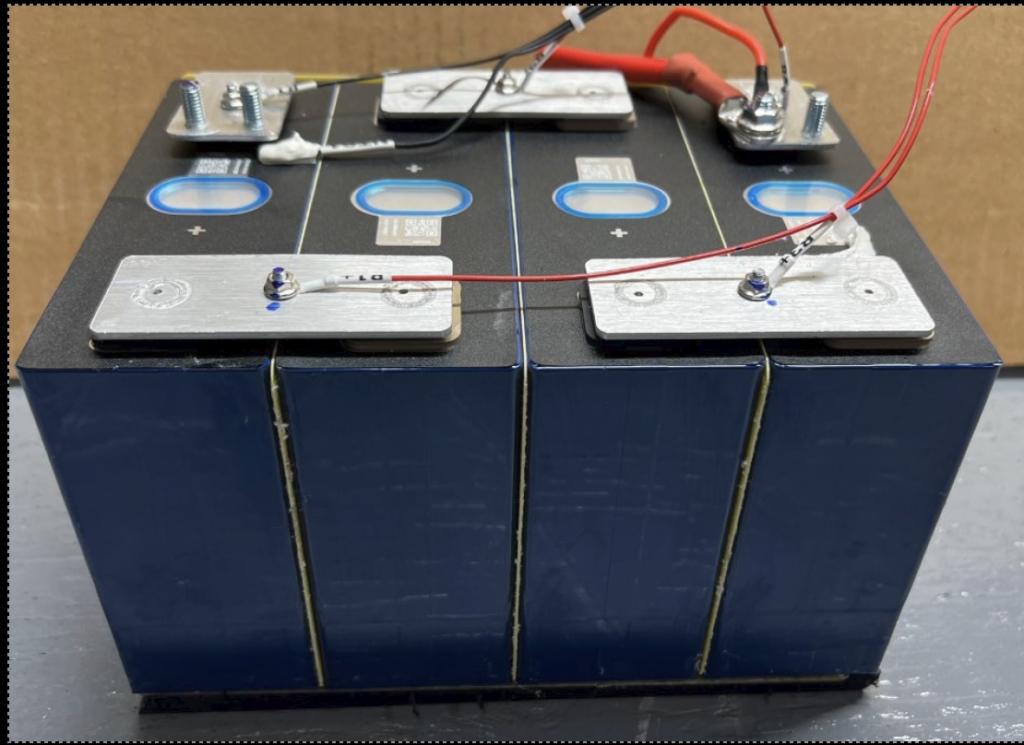
U.S. Battery:
Four Prismatic, 100 Ah cells laser welded in series.
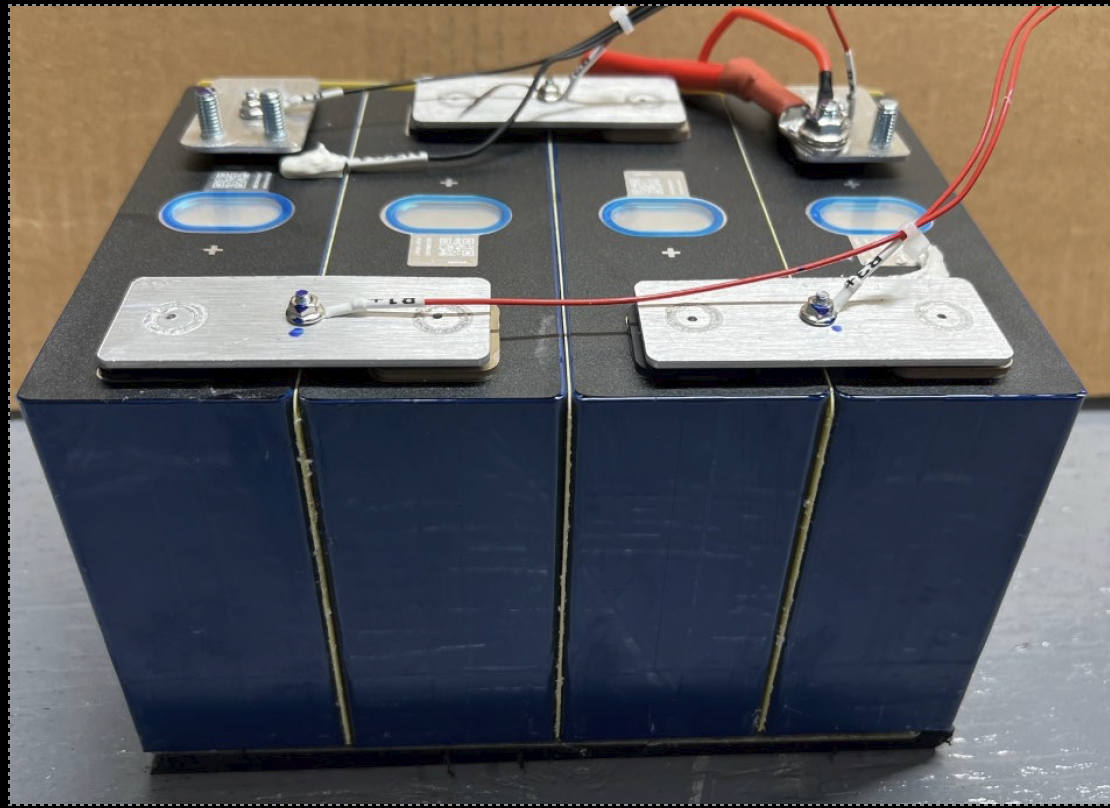
U.S. Battery:
Four Prismatic, 100 Ah cells laser welded in series.
Weld Design & Quality Comparison
One of the major deficiencies of the competitor batteries is the quality and design of the series/parallel weld connections. This is concerning due to the high current ratings that are advertised on the spec sheets. The thickness of the material, the quality and type of welds, and in particular the way Competitor B has constructed the series connections is very alarming.
Competitor A
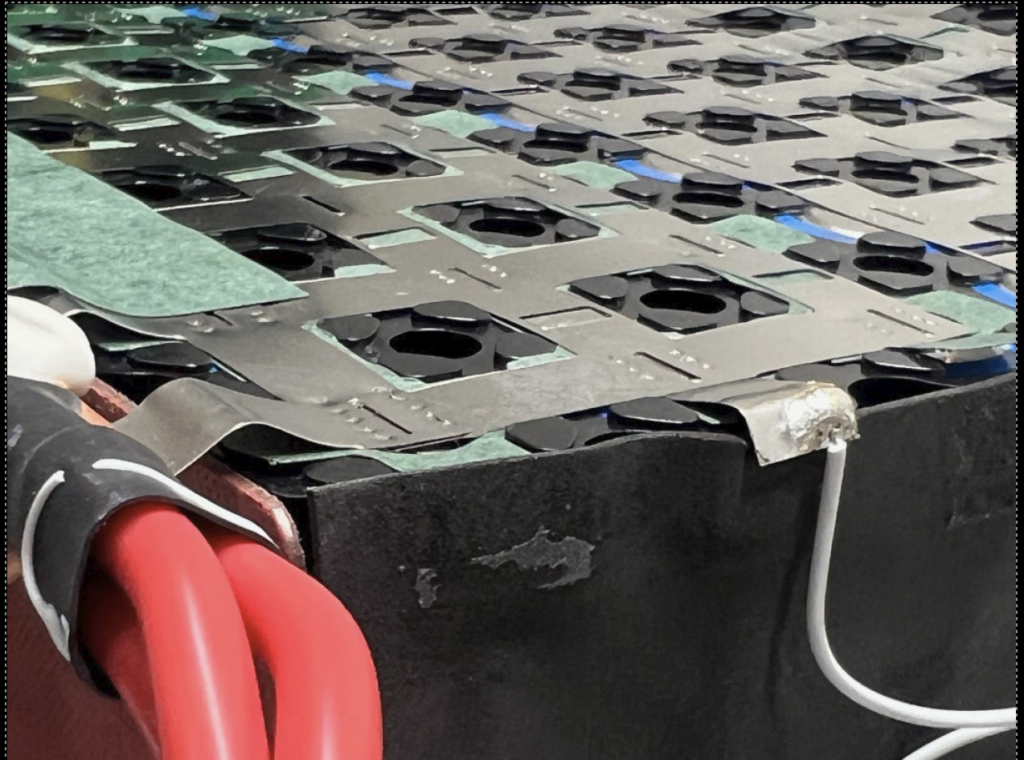
Very thin material used for cell-to-cell connections
(~0.005”)
Poor voltage sensing and cell balancing tab welds with small wiring.
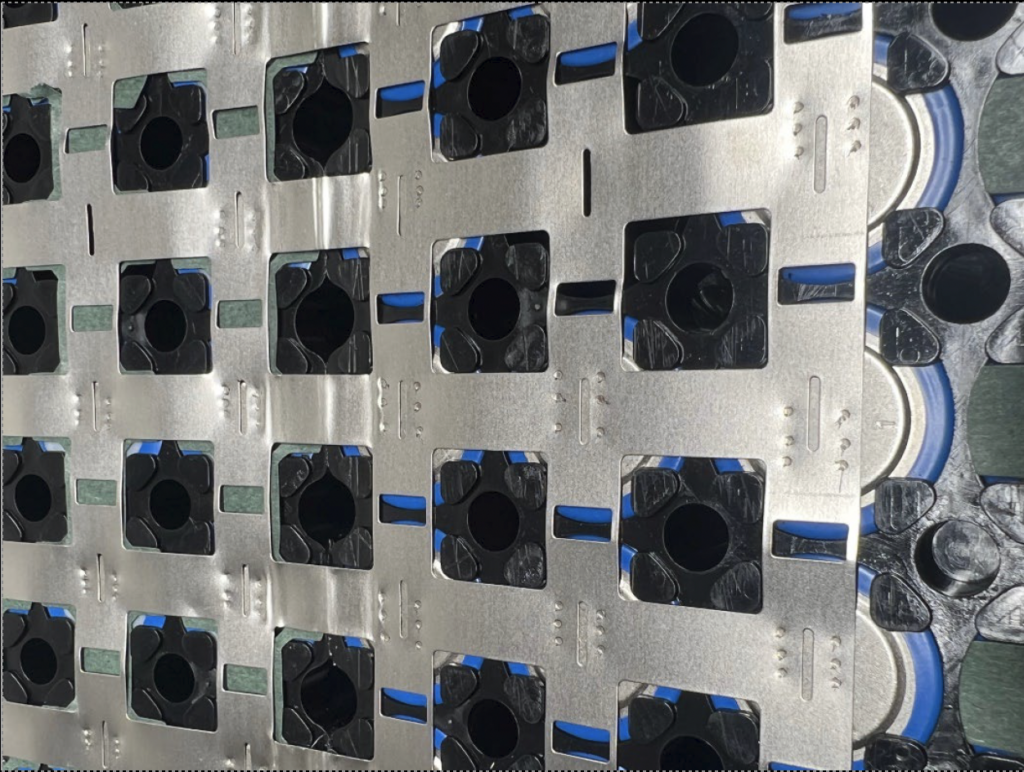
Poor quality spot welds that are small, inconsistent, and misaligned.
Competitor B
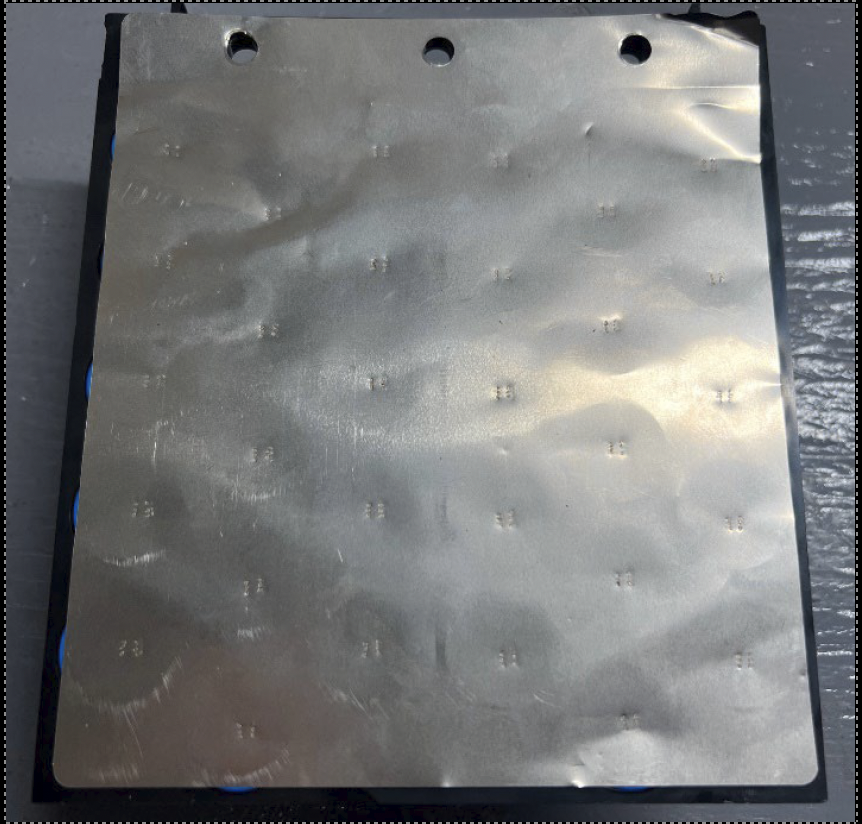
Very thin material used for cell-to-cell connections (~0.004”)
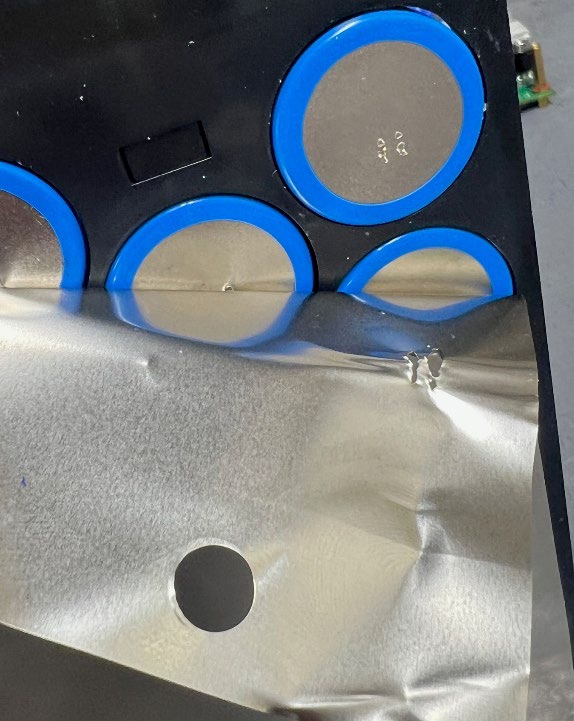
Poor quality spot welds. Intercell connections are easily pulled off by hand revealing limited weld contact area.

Very thin material used for cell-to-cell connections (~0.004”)

Poor quality spot welds. Intercell connections are easily pulled off by hand revealing limited weld contact area.
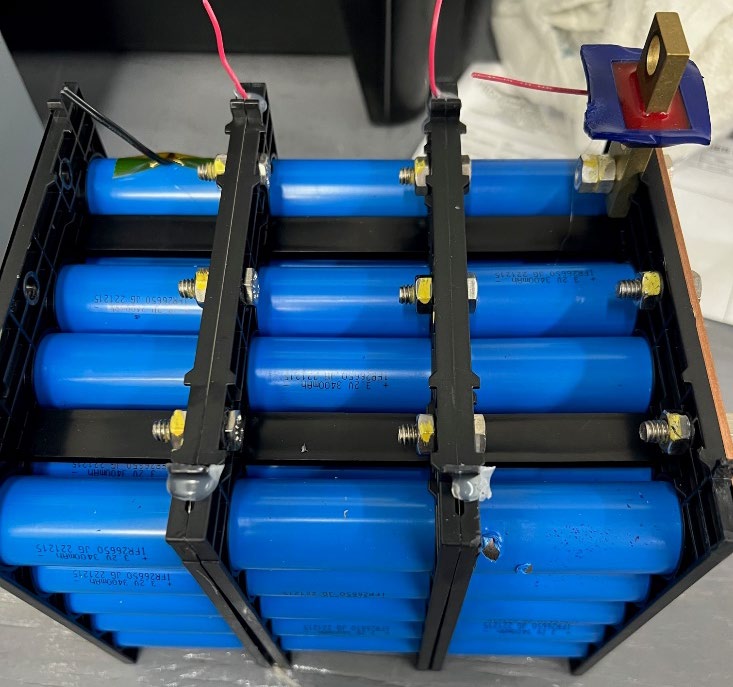
Series connections are bolted and not welded. Hot glue is used to attach voltage sensing and cell balancing leads.
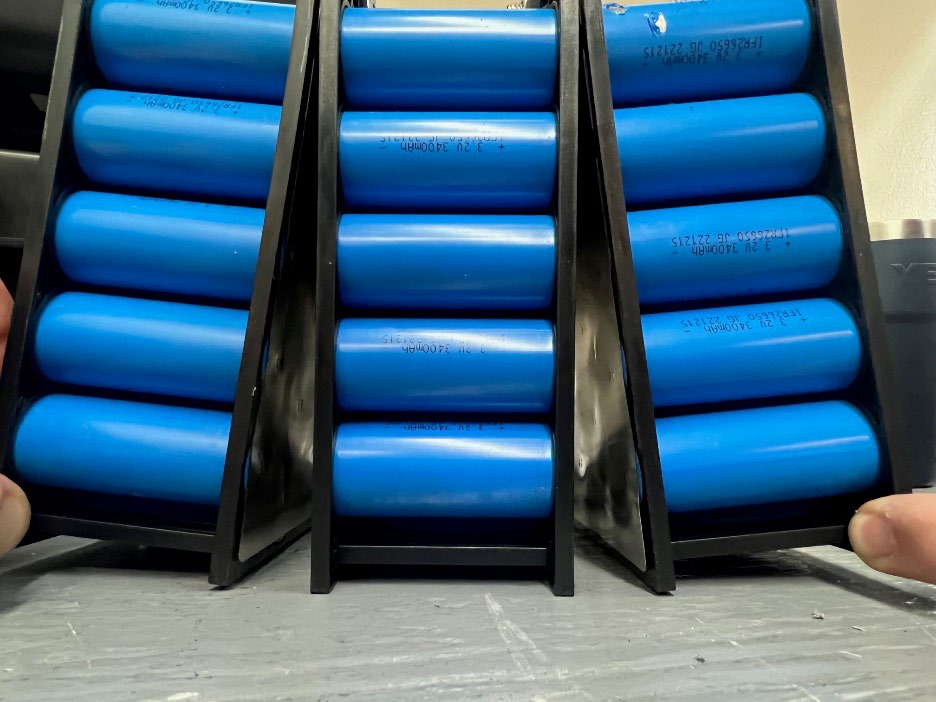
The most concerning thing is that the cell groups are not being welded together and are only fastened at the top of the stack. Resistance at the bottom of the stack is higher than at the top, leading to cell imbalance.
U.S. Battery
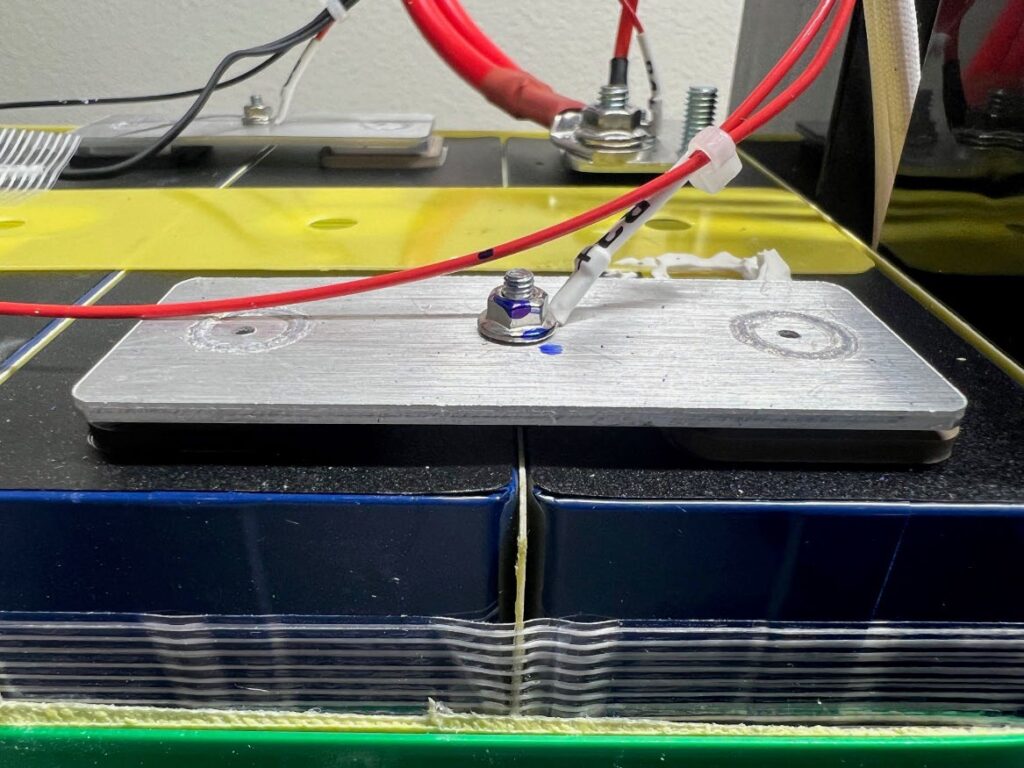
Laser welds
Thick cell -to-cell connections (0.080”) with laser welds. This results in high contact area, low electrical resistance, and high shock/vibration resistance.

Laser welds
Thick cell -to-cell connections (0.080”) with laser welds. This results in high contact area, low electrical resistance, and high shock/vibration resistance.
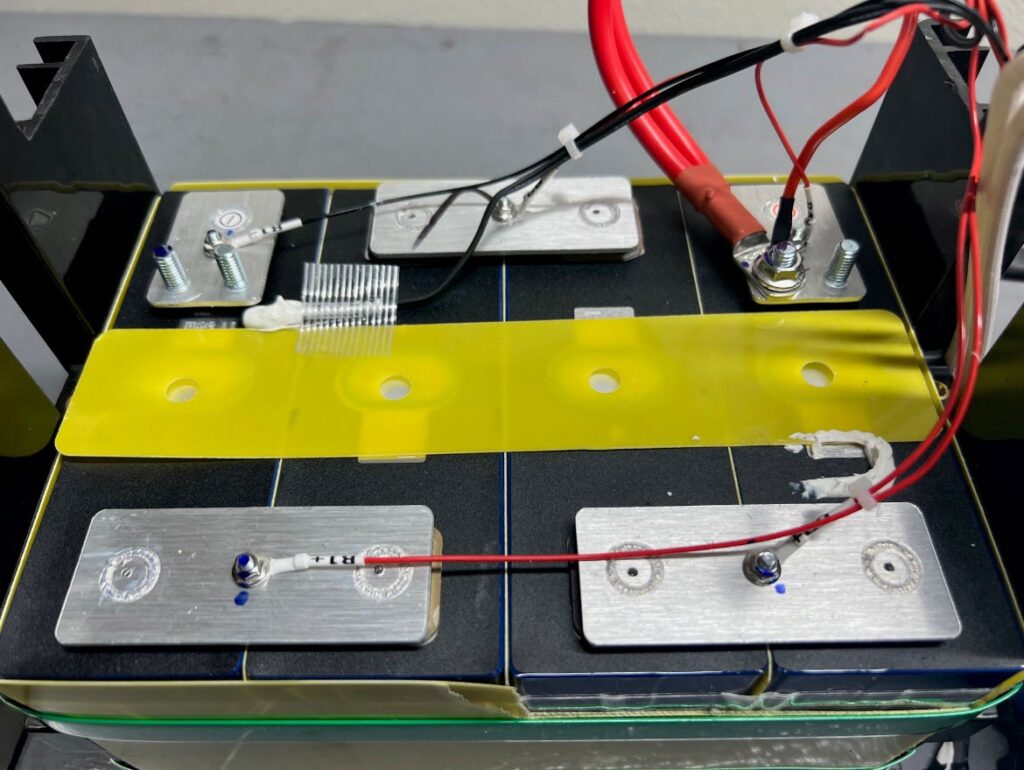
High quality voltage sensing and cell balancing leads.
Thick bus bar material and limited weld points significantly reduce risk of weld failure and internal heating.

High quality voltage sensing and cell balancing leads.
Thick bus bar material and limited weld points significantly reduce risk of weld failure and internal heating.
Battery Management System (BMS) Comparison
BMS comparisons are often difficult due to inability to understand software and electrical design intent. However, there are a few differences in the designs that should be highlighted.
- The competitor designs have limited heat dissipation characteristics. The U.S. Battery design uses two-sided heat sinks with fins to improve BMS heat removal. This design allows for higher sustained power draw.
- U.S. Battery’s BMS has three temperature sensors compared to one on the competitor BMS boards. This is concerning due to the large number of cells in the competitor designs (one sensor for over 100 cells).
- Neither competitors’ BMS designs are mobile app enabled.
- Neither competitor uses a BMS capable of feedback (button or lights). This means that users aren’t able to see state of charge, know status of battery, turn the battery on/off, or be aware of any errors/faults.
- Competitor A uses a BMS that is sourced from a third party who builds generic BMS products for multiple uses.
- Competitor B uses a low cost off-the-shelf BMS that can be purchased on Amazon.
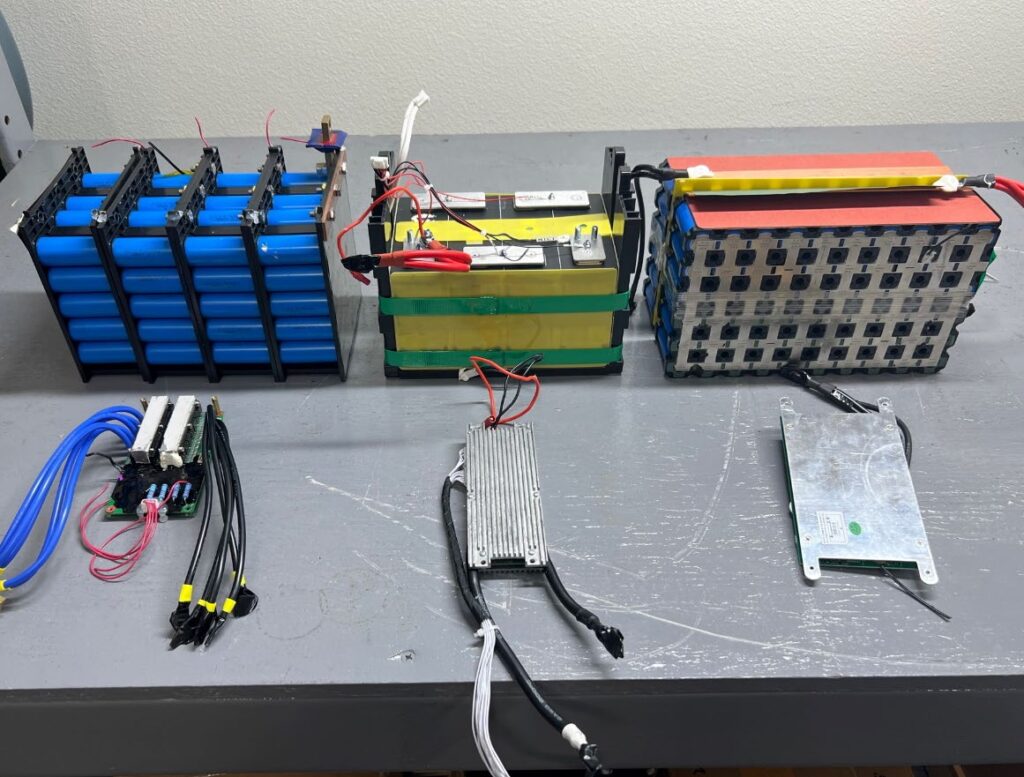
Each battery with their respective BMS

Each battery with their respective BMS
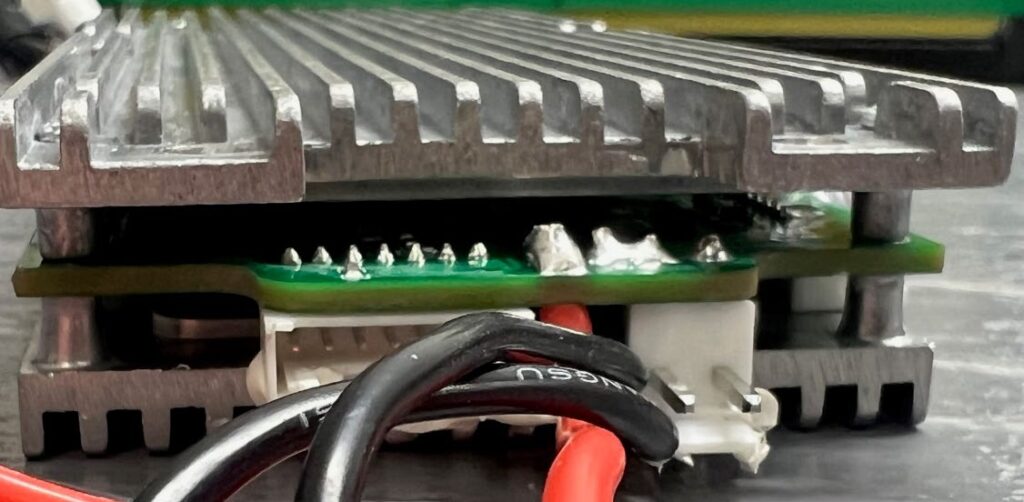
U.S. Battery’s BMS contains dual heat sinks with fins for beter heat dissipation


